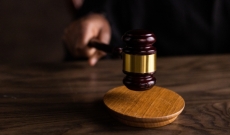Calcutta HC Directs Police Not to Use Facial Recognition Tech Without Regulation: A Win for Privacy in the Digital Age
- ByAdmin --
- 14 Apr 2025 --
- 0 Comments
In a landmark ruling with far-reaching implications for digital privacy and surveillance accountability in India, the Calcutta High Court has directed that law enforcement agencies must not deploy facial recognition technology (FRT) in public spaces without a formal legal framework.
Delivered in April 2025, the Court’s order came in response to a public interest litigation (PIL) filed by a group of digital rights activists who alleged that Kolkata Police had been using facial recognition cameras at public protests and metro stations — without informing citizens, providing opt-outs, or offering any clarity on data storage or usage.
The judgment marks a critical turning point in the balance between technology and constitutional freedoms, particularly the right to privacy, as recognized by the Supreme Court in the Puttaswamy judgment (2017).
The Case: Protesters Tracked Without Consent
The PIL, filed by a civil liberties collective called People First, pointed to recent instances where individuals who participated in peaceful protests in Kolkata and Howrah later received notices or visits from police, despite no violent incidents or FIRs. The petitioners alleged that the police had used facial recognition tools embedded in public CCTV cameras to identify participants and track their movements post-protest.
Key concerns raised included:
- Lack of informed consent or public notification
- No legislative framework or data protection guidelines
- Potential for profiling, harassment, and chilling effect on free speech
- Violations of Articles 14, 19, and 21 of the Constitution
What the Calcutta High Court Said
A division bench comprising Chief Justice T.S. Sivagnanam and Justice Hiranmay Bhattacharya issued a detailed judgment, declaring:
“The use of advanced surveillance technologies such as facial recognition cannot precede legislation. Any act that involves biometric data collection must meet the test of legality, necessity, and proportionality.”
Key directions included:
- Kolkata Police and other agencies in West Bengal are barred from using FRT until comprehensive regulations are notified by the State or Central Government
- Any facial recognition system deployed without express legal backing would be deemed unconstitutional
- The State must ensure public transparency, including signage in areas where surveillance is used
- Data retention policies must be clearly defined and publicly disclosed
The Court added that mass surveillance in public spaces, especially of protestors and citizens exercising free speech, violates the basic tenets of a democratic society.
The Legal and Constitutional Framework
This ruling builds on critical privacy jurisprudence in India, especially:
1. Justice K.S. Puttaswamy v. Union of India (2017)
The Supreme Court held that privacy is a fundamental right, and any state action interfering with it must be backed by law, serve a legitimate aim, and follow proportional means.
2. Anuradha Bhasin v. Union of India (2020)
Where the Court stressed the need for transparency, minimal invasion, and proportionality in restricting digital freedoms.
By invoking these precedents, the Calcutta HC reinforced that technological advancement cannot override constitutional safeguards.
Why This Verdict Is So Important
1. First Major Judicial Ruling on FRT in India
While facial recognition systems have been quietly rolled out in Delhi, Hyderabad, Mumbai, and Kolkata, no court had decisively addressed its unchecked use — until now.
2. Protects Free Speech and Assembly
Using FRT at protest sites creates a chilling effect, where citizens fear being tracked for merely participating in lawful dissent.
3. Promotes Legal Accountability
This judgment forces lawmakers to catch up with technology, ensuring surveillance powers are not exercised in secrecy or without limits.
Public and Expert Reaction
Digital rights organizations, including Internet Freedom Foundation and SFLC.in, welcomed the judgment. Policy expert Apar Gupta called it:
“A milestone ruling that pushes back against the creeping normalization of surveillance in Indian cities.”
Even members of the Bar acknowledged that without this ruling, facial recognition would continue in a legal vacuum, leading to arbitrary profiling, wrongful detentions, or misuse during elections or civic movements.
What Happens Next: A Call for Regulation
The Calcutta High Court has directed:
- The Union Government to expedite work on the Digital India Act and a dedicated surveillance oversight framework
- The State Government of West Bengal to issue interim transparency guidelines, if FRT is to be used in specific security scenarios (e.g., airport security, anti-terrorism units)
- A compliance report within 60 days
Experts also hope this ruling will prompt Parliament to:
- Introduce a data protection law with teeth
- Establish an independent data protection authority
- Enforce prior judicial or administrative approval for mass biometric surveillance
Privacy Before Power
The Calcutta High Court’s order is not a rejection of technology — it is a reclamation of democratic checks and balances. In saying that facial recognition cannot exist outside the law, the Court has drawn a bold boundary around personal freedoms in the digital age.
As surveillance tools grow sharper, so must the laws that govern them. Because without legal limits, even the best intentions can become oppressive systems.
This ruling reminds us that in India, you don’t need to be invisible to be free — but you should never be watched without reason.



























































































































































































































































































































































































































































































































































































































































































































































































































0 comments